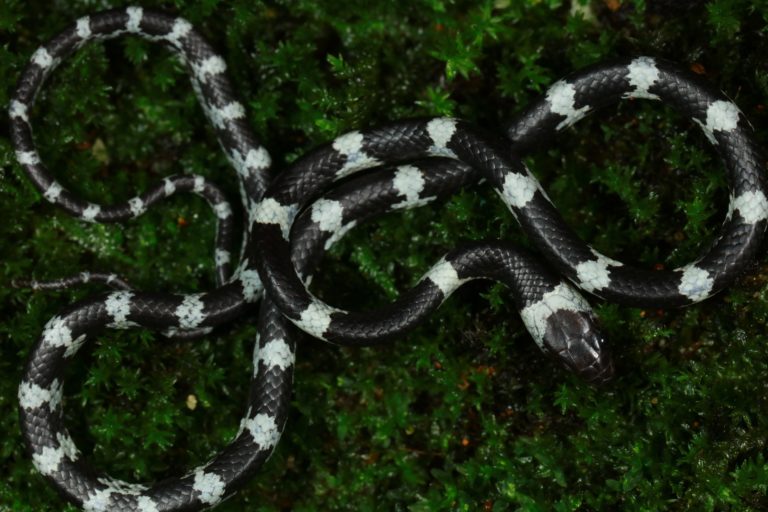Dryocalamus chithrasekarai, or Chithrasekara’s bridle snake, is black or brown and white in coloration.
Sri Lankan herpetologists L.J. Mendis Wickramasinghe and Dulan Ranga Vidanapathirana have discovered and described a new arboreal snake species that hails from the rainforests of Sri Lanka's southwestern wet zone.

L.J. Mendis Wickramasinghe
Dryocalamus chithrasekarai, or Chithrasekara’s bridle snake, was discovered in Sri Lanka.
Dryocalamus chithrasekarai, or Chithrasekara’s bridle snake, is the latest snake from the Dryocalamus genus to come out of Sri Lanka. The snake is black or brown and white in coloration and sports solid white bands on a black body and a mixed black-and-white underbelly.
Threats to this snake include destruction of its rainforest habitat, fragmentation, and vehicular traffic. In fact, a female of the species of which the description was partially based, was collected as roadkill back in 2009 from Sri Lanka’s Peak Wilderness Sanctuary.
The research paper makes the case that Dryocalamus be classified in its own genus and not in the same genus as Lycodon, as Dryocalamus are arboreal and snakes of the Lycodon genus are terrestrial.
“We have observed that Dryocalamus have protruding eyes and behavioral characteristics that set them apart,” Wickramasinghe told Monga Bay. “Dryocalamus species are largely arboreal whereas Lycodon species are terrestrial. Dryocalamus species also exhibit unique feeding behavior, their diet consisting of exclusively of eggs. They consume only the egg embryo and omit the egg shell. In contrast, Lycodon species consume whole eggs as well as small reptiles.”
The complete paper, "A Species-Level Phylogeny of Extant Snakes with Description of a New Colubrid Subfamily and Genus," can be read on the PLOS One website.


